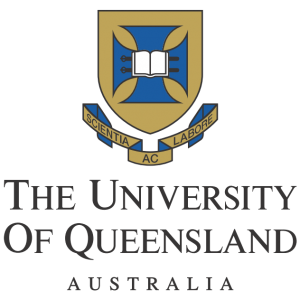This paper, led by Sylvaine, has been published which incorporates invasive speies into conservation planning. It resulted from a CEED workshop held last year in Leece, Italy.
See the paper here.
This week the Kark Biodiversity Research Group met for an annual workshop in Long Pocket, discussing paper writing and reflecting on the past academic year and lessons and plans for the upcoming year.
This week the Kark group and collaborators will lead a workshop on Norfolk island conservation
Dr Tim Doherty from Deakin university visits the Kark group this week to develop collaborations between the groups.
Postdoctoral researcher April Reside is getting the word out on the situation with landclearing in Queensland through a correspondence piece published in Nature on the 15th of September 2016. Land clearing reform failed to pass the Queensland parliament last month, with consequences for terrestrial, freshwater and marine biodiversity.
Follow this link to view the article.
The UQ sustainability page has recently written an article about the Kark group bird boxes which were installed to monitor the interaction between native and invasive bird species. These boxes have been up at 6 different sites since 2014 with an additional 60 new boxes installed over the St Lucia and Pinjarra hills campus within 2016.
The article can be found here.
At the end of July 2016, A/Professor Salit Kark, Dr Justine Shaw and our Post Doctoral researcher Dr April Reside too active part in the Threatened Species Recovery hub workshop. Here NESP hub Chief Investigators discussed the NESP projects they are leading, and Kark and Shaw presented some of the projects inn the framework of the Islands Projects they are leading, such as threats that the cane toad poses to the islands of Western Australia’s Kimberley region and spoke about possible ways to improve outcomes for native threatened wildlife, such as the highly threatened green parrots on Norfolk Island, sea turtles and species of seabirds on Queensland islands.
More information about the workshop can be found here.
In exciting news for Asian rhino conservation, there have been two important new rhino calves born in 2016. The first, a newborn female Sumatran rhino calf to 14 year old and second time mum Ratu and the second a newborn male greater one-horned rhino calf, born in Bardia National Park, Nepal – only a few short months after the translocation of the mother and four other rhinos.
The Sumatran rhino calf, which is yet to be named, was born in the Sumatran Rhino Sanctuary in Indonesia. The birth is significant as the population of Sumatran rhinos is less than 100 world-wide. Sumatran rhinos have disappeared from much of their former range and face many threats including poaching and habitat loss. This birth, the second in the Sumatran Rhino Sanctuary since 2012, aids the conservation efforts to save this critically endangered species.
In Nepal the birth of the male greater one-horned rhino calf is important as it shows that the mother is doing well in the new translocated area. A program officer with WWF’s wildlife conservation team, Nilanga Jayasinghe said, “This healthy calf, born to a recently-translocated female in the Babai Valley of Bardia National Park, Nepal, is a shining beacon of hope for greater one-horned rhinos.” The five greater one-horned rhinos were translocated from Chitwan National Park to Bardia National Park earlier this year to establish new populations in areas where the rhinos used to be found. The translocation efforts for the greater one-horned rhinos will continue through 2018, with the aim of translocating 30 rhinos from Chitwan National Park to Bardia National Park and Shuklaphanta Wildlife Reserve.
Read more about the Sumatran rhino Calf here or about the one- horned rhino calf here.
-Georgina Hockings



